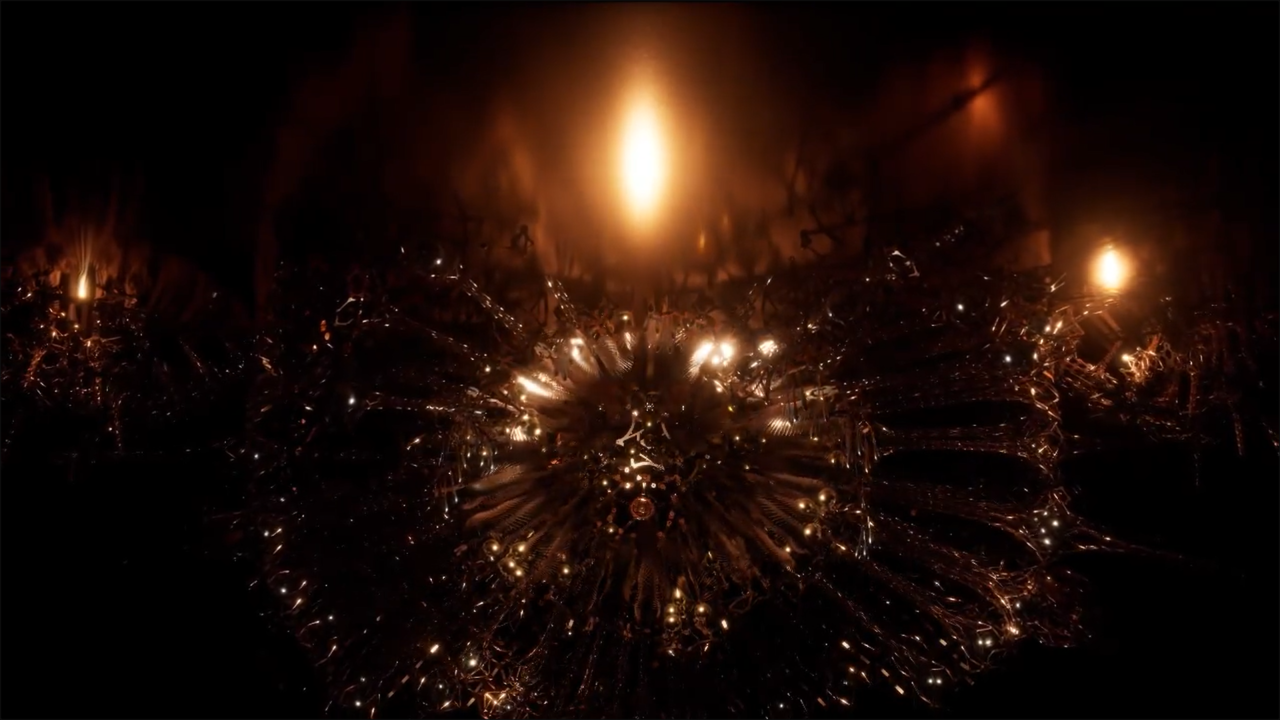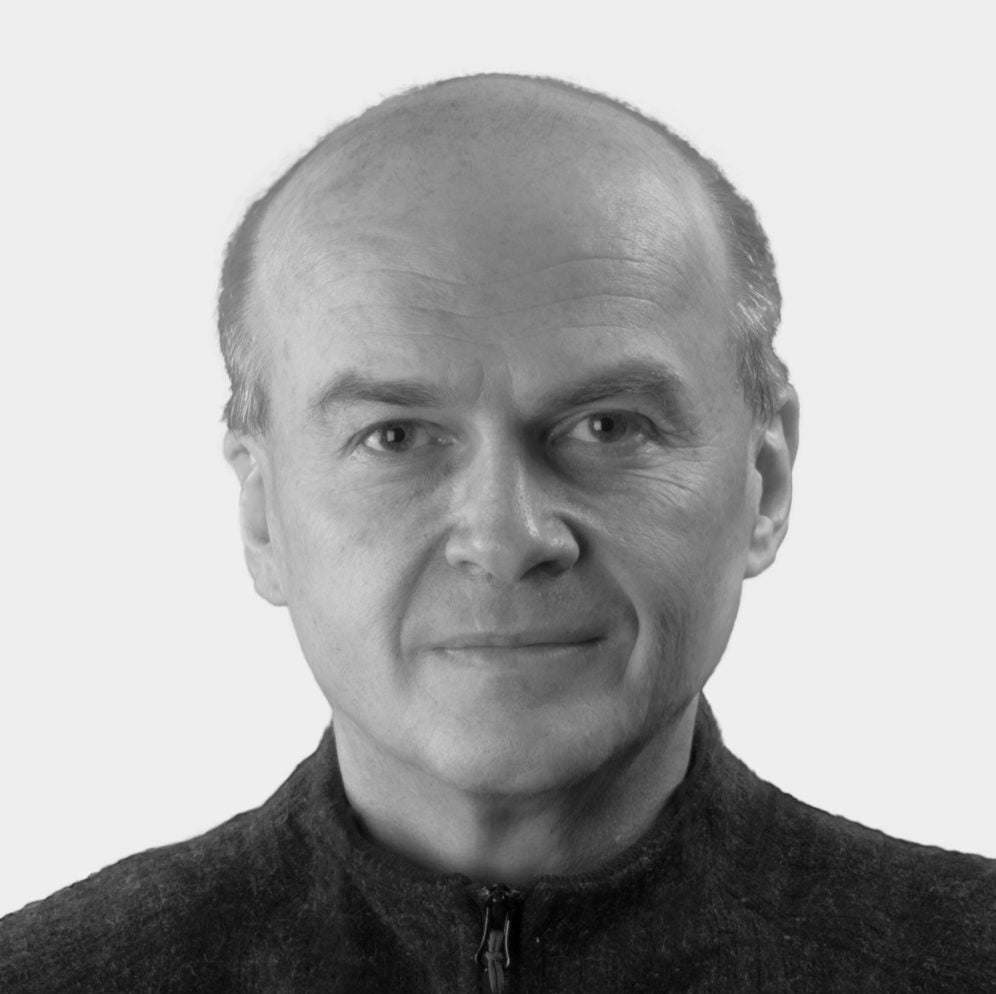
Inspired by living architecture
Professor's dream-like vision of constant metamorphosis brought to life in new film

Professor's dream-like vision of constant metamorphosis brought to life in new film
By Carol Truemner Faculty of EngineeringA Waterloo School of Architecture professor is the co-creator of a new short film inspired by his living architecture creations.
Philip Beesley worked on the film entitled Cradle with Warren du Preez and Nick Thornton Jones, who are both based in London, England, and Salvador Breed, who is based in Amsterdam.
A media release on Cradle's June 13 online premiere said that film evokes the birth of life on earth.
“Within an astral, Arh a child-like being emerges, reflecting the fundamental journey from death into new life,” the media release said.
Beesley provides the man’s voice in the film which was co-produced by Bianca Weeko Martin (BAS ’19, MArch ‘22).
Devoted to opening traditional boundaries between nature and technology, Beesley’s work is widely cited in art and architecture for its pioneering contributions to the rapidly expanding field of responsive, interactive environments.
Phillip Beesley, School of Architecture professor
Last year, an extended, immersive version of Cradle accompanied Beesley's installation called Grove exhibited at the 2021 Biennale of Architecture in Venice.
Interpreted by The New York Times as “overcoming social and political polarization by replacing hard walls with open environments”, Grove included a canopy of what looks like luminous, lace-like clouds embedded with liquid-filled glass vessels.
Beesley leads Philip Beesley Studio Inc. and the Living Architecture Systems Group, a University of Waterloo affiliated partnership of academics, artists, designers, and industry partners dedicated to researching and developing next-generation architectural environments.
Cradle was supported by Canada Council for the Arts, Embassy of Canada to Italy, HIP Developments, Social Sciences and Humanities Research Council (SSHRC) and the University of Waterloo.
The film can be seen on @philip.beesley Instagram IGTV and YouTube.
Main photo is a screenshot from Cradle

Read more
Here are the people and events behind some of this year’s most compelling Waterloo stories

Engineering master's student Nayeema Nonta (left), one of the three paper authors, and her supervisor, Dr. Sirisha Rambhatla, in a large server room with the computer power needed to develop their new LLM training technique. (University of Waterloo)
Read more
Waterloo researchers develop highly efficient AI training system that paves the way for cheaper, greener “intelligent partners”

Read more
Engineering researchers team up to tackle the plastics pollution problem with microbial innovation and engineering design
The University of Waterloo acknowledges that much of our work takes place on the traditional territory of the Neutral, Anishinaabeg, and Haudenosaunee peoples. Our main campus is situated on the Haldimand Tract, the land granted to the Six Nations that includes six miles on each side of the Grand River. Our active work toward reconciliation takes place across our campuses through research, learning, teaching, and community building, and is co-ordinated within the Office of Indigenous Relations.